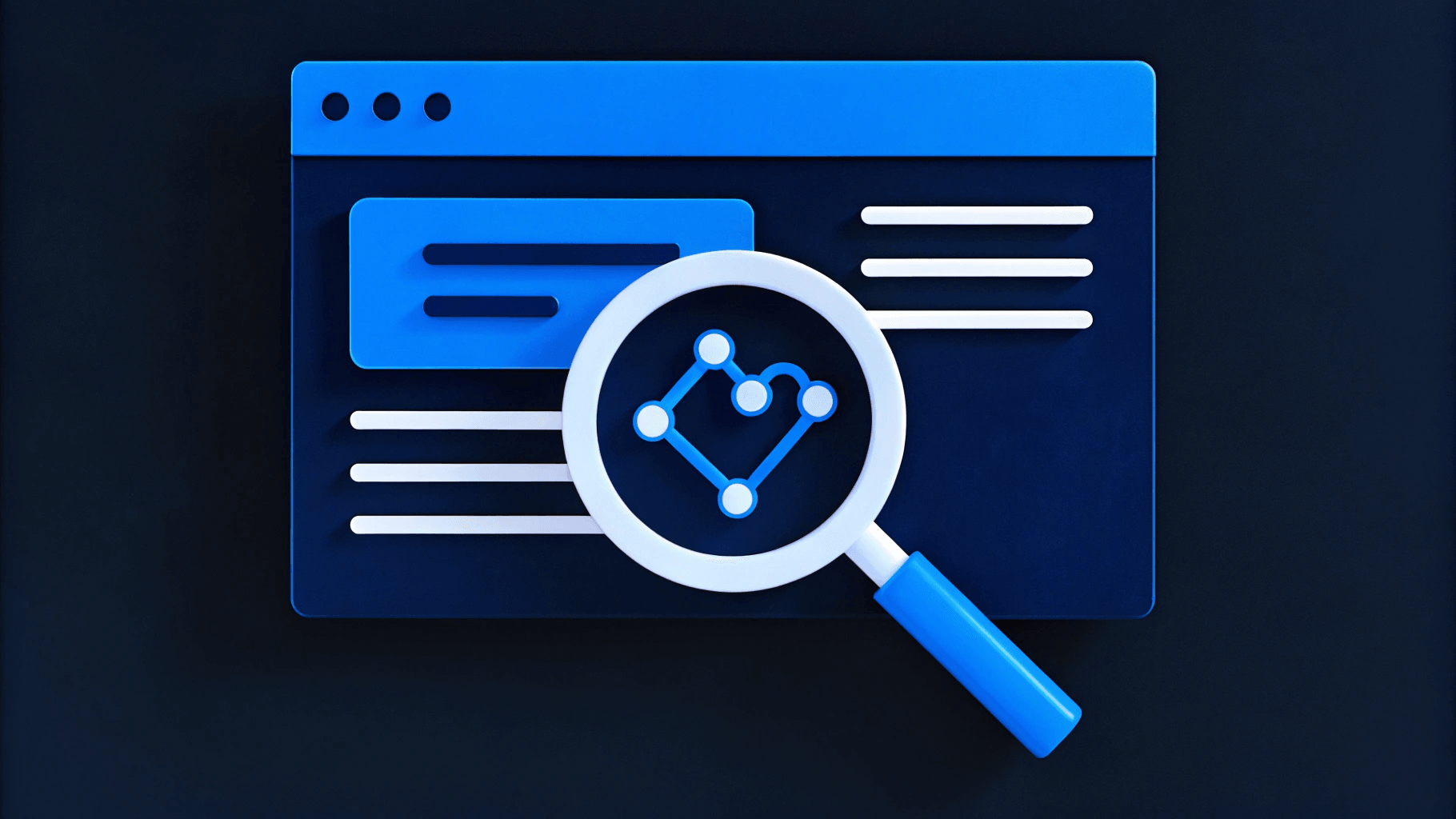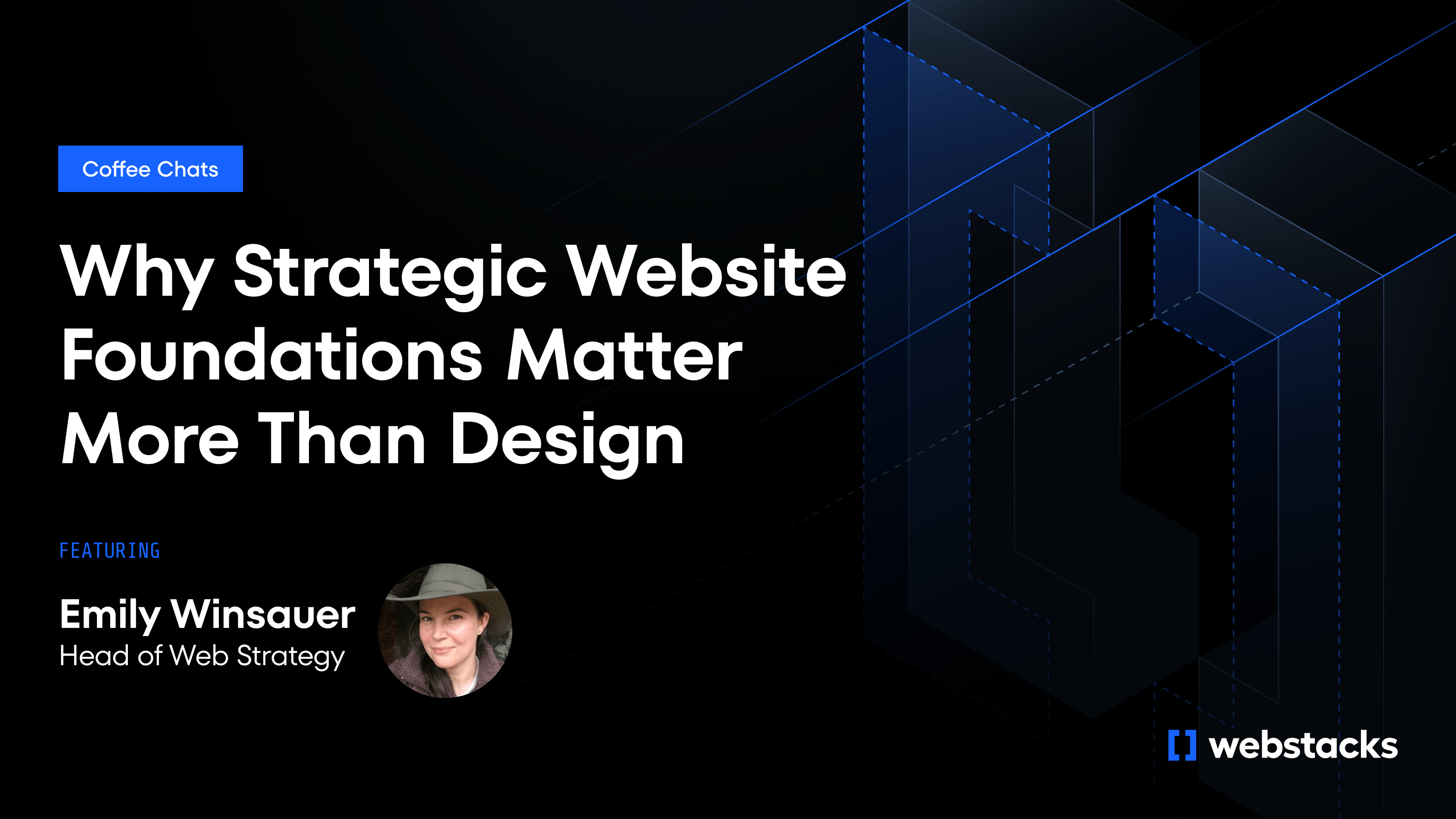Most ABM sites are still built for static campaigns. They serve the same headline, CTA, and proof points to every visitor, even when the buying committee includes people with completely different priorities. AI personalization changes that by adapting the site experience in real time based on CRM data, firmographics, and engagement signals.
This approach lets you serve a procurement lead a pricing calculator while showing the CMO a relevant case study, all on the same visit. Teams using AI personalization see faster deal cycles, better-qualified leads, and stronger conversion from paid channels.
If your site can't respond to who’s visiting and what they need, it becomes the weakest link in your ABM motion. This guide shows how to fix that with scalable personalization that integrates into your existing stack and supports faster execution across marketing, sales, and web.
What Is AI ABM Personalization
Traditional ABM treats each account as a market. AI takes it further by treating every stakeholder within that account as a unique audience. Instead of sending everyone to the same landing page, AI-powered personalization uses live CRM, behavioral, and firmographic data to adapt messaging in real time across web, email, and paid channels.
This isn’t static persona marketing. The system updates continuously based on first-party activity, ad engagement, and third-party intent. Predictive models evaluate buying stage, role, and past behavior to serve the most relevant proof point—whether that’s a case study, pricing calculator, or security checklist. NLP tools adapt tone and content variants at scale, while orchestration platforms deploy tailored assets across every channel without manual intervention.
The personalization engine typically runs in four steps:
- Ingest signals from CRM, web analytics, and third-party feeds
- Detect patterns using predictive analytics to identify role, segment, or stage
- Select content matched to account context and individual priorities
- Deploy variations across web, chat, email, and ads through automation
This allows teams to support multi-threaded buying journeys without adding operational overhead. Each stakeholder sees content aligned to their goals the moment they land—without waiting for a nurture flow to catch up.
Key Benefits of AI ABM Personalization
AI-powered personalization drives meaningful gains across conversion, sales velocity, and team efficiency. As models learn from live engagement, targeting improves without requiring more manual effort. The value compounds over time—each visit, click, and form submission trains the system to deliver more relevant experiences. When applied across the entire website experience, personalization improves how teams activate segments, route buyers, and measure full-funnel performance.
The timing matters. B2B deals increasingly involve six or more decision-makers, each with different expectations. Static sites force users to dig for relevance and often result in stalled deals, missed intent windows, and attribution gaps. Personalized experiences, on the other hand, feed every click back into the model, tightening the loop between marketing and sales.
As buyer expectations rise, the cost of lost revenue due to generic experiences increases. The teams that operationalize personalization now will outperform slower competitors—not because of AI alone, but because they’ve rebuilt their systems to support speed, precision, and intent-based execution.
1. Higher Conversion Rates
Web experiences that adapt by role and buying stage convert better. When the site recognizes a CFO versus a product lead, it surfaces the proof points that matter to each—automatically. Teams using intent-based offers and dynamic CTAs often see 30 to 50 percent higher conversion rates across forms, demo requests, and high-value pages.
Scaling this across thousands of accounts amplifies results. As each visit reflects the visitor’s stage, vertical, and pain points, more deals are influenced by the website and attributed revenue grows.
2. Shorter Sales Cycles
AI-driven sequencing reduces friction across the buyer journey. Predictive models anticipate questions and objections, serving the right content before stakeholders ask for it. This removes the need to dig for relevance, helping buyers align faster.
Instead of waiting for follow-up assets or gated PDFs, visitors get decision-stage information the moment they show intent. This speeds up stakeholder alignment and reduces the number of manual touchpoints required to move an opportunity forward.
3. Improved Account Intelligence
Every interaction sharpens the model. Clickstream data, keyword patterns, and content preferences update account scores in real time. These insights surface early-stage interest, highlight active buying signals, and map influence across the committee.
Data flows back into your CRM and sales tools, supporting tighter handoffs and more accurate forecasts. Marketing sees which assets drive movement. Sales gets a live view of where accounts are engaged and where support is needed.
4. Smarter Resource Allocation
Predictive scoring ranks accounts by likelihood to buy, so your team can focus on high-fit opportunities. It also helps identify which channels and message types resonate with your best accounts, allowing for more precise planning.
Marketing teams can reallocate budget toward assets and segments that consistently trigger next-step behavior. Automation frees up time previously spent on list management, allowing teams to focus on campaign testing, offer strategy, and account-level insights.
What Real-Time Personalization Actually Does
Static sites show the same page to every visitor. Real-time personalization adapts the experience mid-session based on who the visitor is and what they’ve done. It responds to live behavior and account-level signals to make the experience more relevant without requiring a page reload or manual targeting.
For example: A returning VP of Finance lands on your pricing page. The system recognizes the account, scores the role, and immediately replaces the headline with a capital-efficiency value prop. It swaps the case study with one from a peer company, adds a calculator module, and queues up a follow-up email with tailored messaging, all before the visitor scrolls past the fold.
This shift turns your website into a responsive experience that mirrors the way sales and marketing teams already segment and engage prospects, just now at page speed.
The Three Required Components for AI Personalization
Most personalization efforts break down because the underlying systems aren't built to support dynamic experiences. Before you can deliver relevant content in real time, you need the right infrastructure in place.
1. Unified data layer: This layer aggregates CRM, behavioral, product usage, and third-party intent data into one place. Without this, your AI system can’t accurately identify visitors or understand what they need.
2. AI decision engine: This model ingests data, scores each session in real time, and chooses what content to serve. It determines stage, persona, and priority so the site adapts with context.
3. Modular front-end: Content must be broken into reusable blocks—hero sections, CTAs, testimonials—so the system can swap modules in and out without requiring a full page reload or redeploy.
How These Components Work Together
Once a visitor lands on your site, the system begins listening. It collects firmographic and behavioral signals, matches the session to an account, and scores the visitor using the AI model. The decision engine chooses the most relevant content variation and serves it instantly through your composable front end.
If the visitor clicks a product feature link or opens a pricing calculator, the system updates their engagement score and reshapes the experience again. That feedback loop continues across email, chat, and retargeting ads—creating a coordinated journey without manual handoffs.
What You Need to Get Started
Personalization fails when the foundation isn’t in place. Before investing in AI tooling or personalization platforms, teams need alignment across content structure, data flow, and measurement. If any one of these areas is incomplete or misconfigured, the system won’t deliver reliable outputs. You don’t need a complete overhaul to begin. Start with these three essentials:
- Clean, connected data systems: Ensure your CRM, CDP, and site analytics can pass data into a shared layer. Data gaps break personalization logic.
- Modular, structured content: Audit your current components. If your hero sections or customer stories are hardcoded into templates, they won’t be swappable.
- Performance tracking and benchmarks: Set baseline metrics on engagement, conversion, and load speed. You need to measure what changes when personalization activates.
Common Problems and First Steps
Many teams fail because they try to personalize too much, too early, often on top of messy infrastructure. Fragmented systems, conflicting ownership, and unreliable data make outputs unpredictable.
Start small. Choose one high-traffic, high-intent page, such as a pricing or key product page. Add a single variable, such as changing the headline based on industry or stage. Watch for measurable lift in engagement or conversion.
You’ll know it’s working when visitors move through your site faster, take action sooner, and report seeing content that matches their needs. From there, you can expand confidently, guided by results, not assumptions.
How Modular Websites Enable AI ABM Personalization
AI-driven personalization only works when your website is built to support it. Most teams struggle with disconnected tools, brittle templates, and long turnaround times. Webstacks replaces that with a modular, API-first system designed for speed, adaptability, and real-time orchestration.
Our composable stack connects your headless CMS, front-end framework, and automation platforms through clean APIs. This creates a shared data layer where signals flow into the AI engine and drive coordinated updates across web, email, chat, and ads.
Modular content blocks give marketers the flexibility to update messaging by persona, stage, or vertical—without engineering support. You can swap a testimonial, reframe a value prop, or localize a hero section in minutes, not sprints.
Governance enables this flexibility at scale. With clear roles, version control, and design guardrails, teams ship fast without breaking consistency. As AI segments shift and new signals surface, your team can respond immediately—no backlog required.
Every component is instrumented for performance. Dashboards track how each variation affects engagement, lead quality, and pipeline velocity. You get actionable feedback fast enough to adjust before the quarter ends.
If you're building a site to support ABM at scale, Webstacks helps you move from static assets to a personalized system that evolves with every click. Talk to our team to turn your website into a live growth engine.




